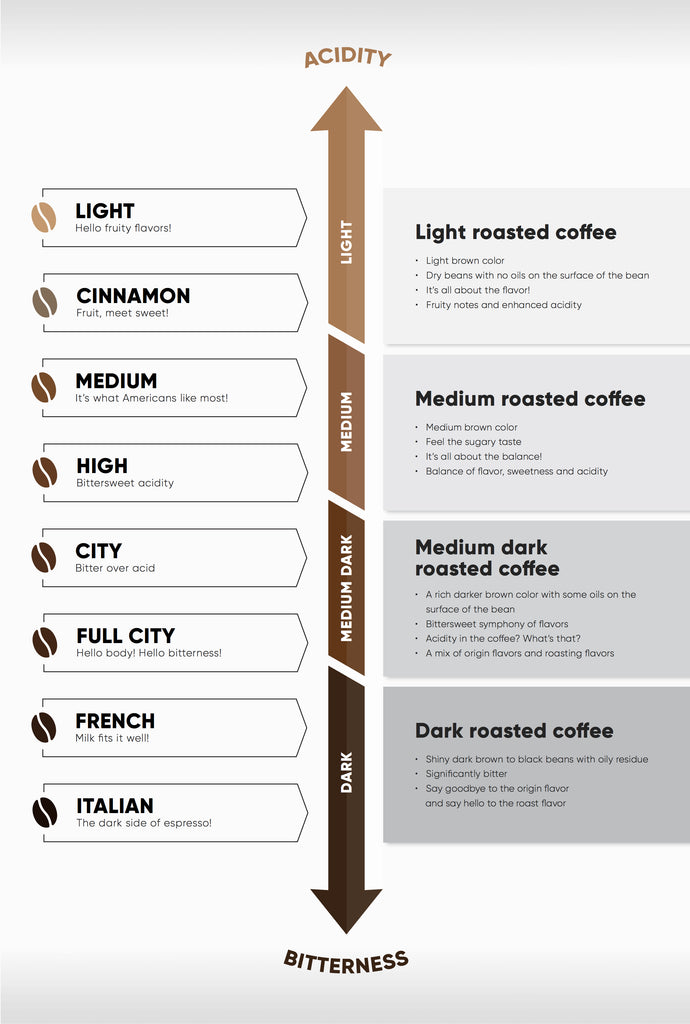About a bean: The character of a roast
Have you ever visited a roaster to see how a bunch of green beans is transformed into these beautifully aromatic and beautiful roasted beans that give us our daily pleasure? If not, call your local roaster and arrange a visit. It’s amazing!
Coffee artists are called roasters and their canvas is a bag of green beans. The artwork is roasted coffee. Yes, it is an art form of its kind!
There are two main ingredients in the process of creating a specialty coffee bean that is roasted to perfection: the quality of the green beans and the roasting technique. The roaster is the one that chooses his canvas with a careful selection of which green beans he will include in his roasting schedule. And like an artist that uses paint and brushes or any other artistic tool, the roaster creates his art with his trusty roasting machine.
From green to yum
OK, let’s go back to the roots … growing process aside, the result of the coffee bush is a berry. Red and beautiful. There are two seeds in a cherry. There are a variety of processes to get those coffee beans from the cherry (but we’ll write about that in another blog post). Once the framers get these beans out of the cherry and dry them with care, it’s the roaster's turn to do his magic trick.
There is more to roasting then meets the eye … when you visit a roaster it all looks so easy … pop the beans in the roaster, leave it to roast, empty, and cool down. Sure, roastmasters make it look easy. But what we don’t see years of training, experiments went bad (or good) and a whole lot of knowledge, curiosity about coffee and enthusiasm.
What about the roast?
We all have our preferences when it comes to our favorite roast – some like it light, some like it dark, some can’t even decide, and are surprised by every single roast they taste. We made a little infographic that will help you choose the type of roast you prefer. But don’t let the color of the bean mislead you in your coffee experimentation … sometimes the best coffee will be the one you least expected!

LIGHT ROAST
The color of lightly roasted coffee is light brown(ish) The beans have a dry surface and can look a bit pale to the inexperienced coffee drinker. But there’s a knick to a lightly roasted coffee – these beans will offer you the most of the original flavors that are determined by the varietal, the soil, weather conditions when growing. Oh and even other plants that grow near the coffee bush can give the bean a distinct flavor. Bet you didn’t know that, huh?
In the roasting process, these are the beans that are ejected from the roaster quite soon after the first crack.
In a nutshell: more origin flavors, less roast influence.
MEDIUM ROAST
A bit darker by appearance, a medium roast is becoming a favorite for espresso in specialty coffee shops (compared to dark espresso roasts of the past). A medium roasted bean is sweeter than a light roasted one and brings “balance to the force” (a flavor that is). At the moment medium roasts are building quite the fan base among coffee lovers worldwide, especially those who can’t handle the clear origin flavors of light roasts.
A medium roasted bean is roasted for a bit longer, between the first and second crack.
In a nutshell: the balance between origin flavors and roast influence.
DARK ROAST
Welcome to the dark side of coffee! A dark roast was the standard for decades, especially for the Italian style espresso drinks, but it is now losing its prime, especially in specialty coffee. You can quickly notice a dark roasted bean – well, it’s dark. And the surface of the bean can be a bit oily, as the roasting process will release oils in a bean. These beans have a smoky and bitter(ish) flavor and most of the original flavors are mostly gone.
A dark roasted bean is roasted almost until the second crack or even beyond it.
In a nutshell: origin flavors are overwhelmed by the roast flavor.
---






